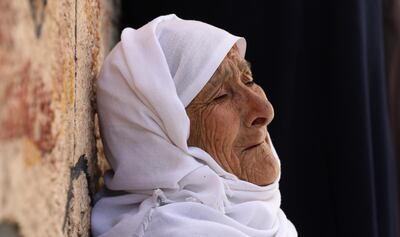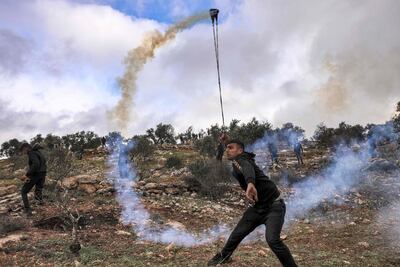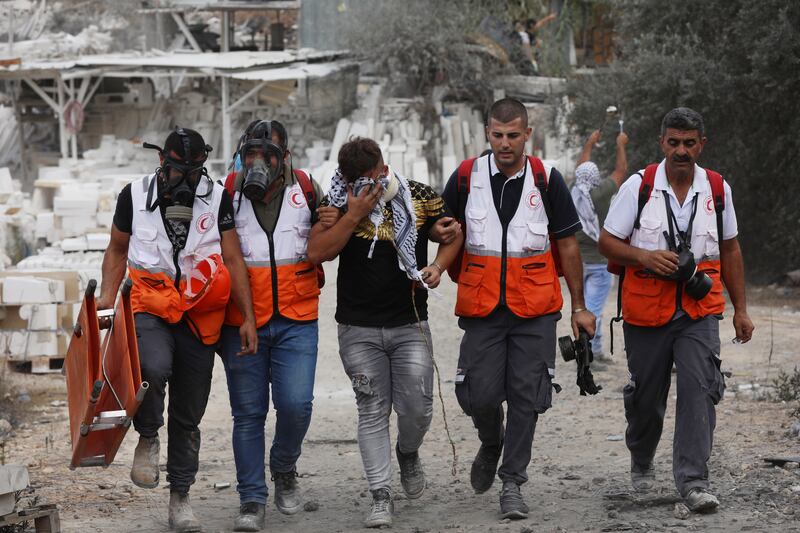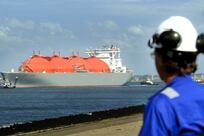The killing of 10 Palestinians by Israeli forces and thousands of injuries have scarred villagers in Beita in the occupied West Bank, where residents are counting the toll of a year of protests.
“I attended the first day of the school year, I went to their classroom and there was one empty seat. They had put a photo on it,” said Said Hamayel, 49, whose son Muhammad was shot dead in June.
“All his friends were present and were really affected," he said. "They started to cry over their loss."
Muhammad Hamayel, 16, was one of 10 Palestinians who paramedics have recorded being shot dead by Israeli soldiers in the past year.
Beita lies south of Nablus, beside a major road that cuts through the West Bank and below hills dotted with olive trees.
On one of those hilltops last spring, Israelis arrived and started building. Within weeks there were breezeblock homes, tarmac over the earth and a playground.
While the international community deems all Israeli settlements in the West Bank illegal, Israel’s government distinguishes between those it approves and ones its citizens build without permission.
Although the settlement outpost was deemed illegal under Israeli law, soldiers were stationed at the site while Palestinians from Beita demonstrated on the slopes opposite.
Protesting against what they saw as the theft of their community’s land, much of the village youth took to the hillside.
“Muhammad was very ambitious and had big hopes … [he] wanted to study international law,” said his father, sitting in the local municipality.
The teenager was shot in the heart, physicians from the Palestinian Red Crescent Society told The National.

Medics have treated more than 170 gunshot wounds in Beita over the past year, in addition to nearly 1,000 injuries from rubber bullets.
The Israeli military said the demonstrations represented a threat to civilians and troops.
Over the past year, “hundreds of Palestinian rioters set fires, burnt tyres and hurled rocks and explosive devices”, the military said.
“The IDF [Israeli Defence Forces] responded with riot-dispersal means and live fire in accordance with standard operational procedures.”
Many Palestinians have lost eyes, while other protesters are expected to suffer from lifelong medical problems after being shot in the knee.
Palestinian medics have recorded about 4,500 injuries from various types of tear gas over the year of violence.
“Some of the gas hurts your skin,” said Dr Abdel Jaleel Hunjul, who heads a field hospital established at the start of the protests.
“If you, for example, try to put some water [on your skin], it will be like hell. It will burn.”
The military used drones to drop vast quantities of tear gas on the demonstrators, while the canisters also hit ambulances, Dr Hunjul said.

Rallies continued despite the Israeli settlers evacuating the site last summer, under an agreement that the buildings would remain while authorities decide whether they can return.
Sitting in the Red Crescent centre in Beita, Dr Hunjul flicks through photos and videos of the wounds he has seen in recent months.
One of the most severely wounded treated at the field hospital was a man in his 20s who was shot in the mouth.
“When he got to the hospital, [there was] blood everywhere. We started CPR, and he came back [to life],” Dr Hunjul said.
Among those they could not save was 15-year-old Ahmad Bani Shamsah, who had been shot in the head.
His grieving mother May Bani Shamsah, 37, said: "When I read the medical report about my son, it made my body shudder. His whole brain had exploded."
When the protests turned deadly, she had tried to prevent her son from joining in the demonstrations.

“We shut him in the house, we didn’t let him go out," she said. "There were serious clashes every day."
The number of people wounded in Beita protests has fallen in recent weeks, but there are fears of further violence if the Israeli government allows the settlers to return.
“When the settlers enter the hill, what will happen?" said Ms Bani Shamsah. "Of course, everyone will go to the hill.”
A track leading to the outpost was being guarded by soldiers, while a huge Israeli flag flew from the hilltop.
Sitting in her living room, Ms Bani Shamsah considered what her community has gone through over the past year.
“The village has changed a lot,” she said, beside pictures of her late son. “Today you feel that most of the village is sorrowful.”







